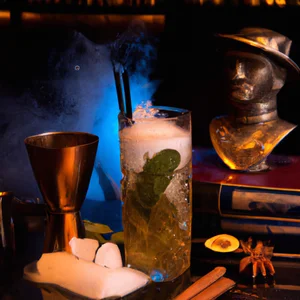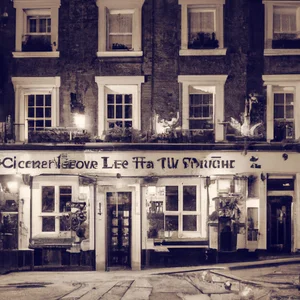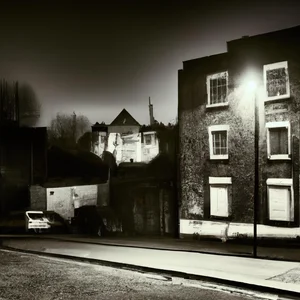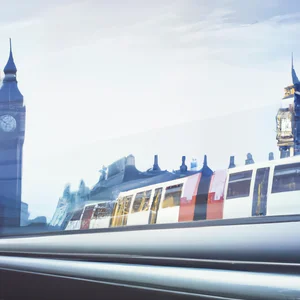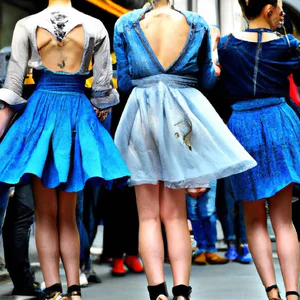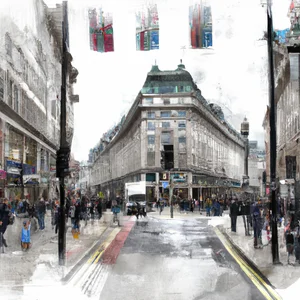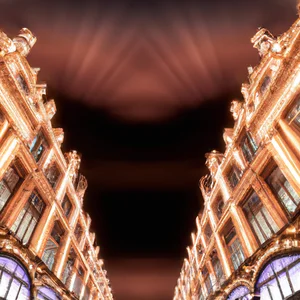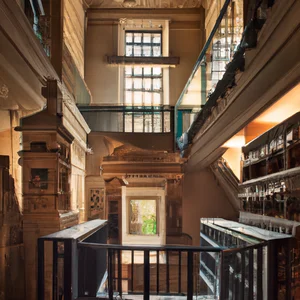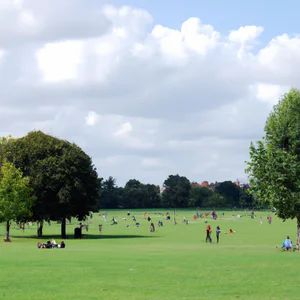Book your experience
Belgravia: timeless elegance among Victorian villas and private gardens
Belgravia is just a place that takes your breath away, you know? It’s as if time had stopped there, among those Victorian villas that look like they came out of a film. Do you remember when I went there with some friends a couple of years ago? We walked through the private gardens and, I don’t know, there was an air of elegance that makes you feel a bit like a nobleman, even if you don’t actually have a penny in your pocket!
The houses, then, are truly something unique. They have those architectural details that make you wonder how much work went into them. It’s as if every brick tells a story, and I always imagine what life must have been like in there. Maybe once there was a lady who organized afternoon teas, with her guests in elegant clothes. I don’t know, maybe I’m exaggerating, but it’s so easy to let your imagination carry you away to a place like that.
And the gardens? Wow! They are like corners of paradise amidst the hustle and bustle of the city. Every now and then, as you walk, you can see some petals dancing in the wind, and you feel like you’re in a painting. It’s a bit like a breath of fresh air in a world that’s always moving too fast. Maybe that’s why Belgravia feels so good, almost like home.
In short, if you are looking for a place where elegance is not just an adjective, but a real lifestyle, well, Belgravia is the answer. Of course, I don’t know if I would live there, because the cost of living is a bit dizzying, but a walk there is always a nice way to get away from the routine. What do you think, would you like to go?
Discover the Victorian villas of Belgravia
An enchanting experience
Walking along the streets of Belgravia, I vividly remember the moment I found myself in front of the splendid Wilton Crescent, one of the most iconic squares in the neighbourhood. The imposing Victorian villas, with their white facades and finely crafted architectural details, seemed to tell stories of a bygone era, of elegance and aristocracy. Every step on that cobblestone floor took me back in time, making me feel part of a story that is intertwined with the history of London.
Practical information
To explore the Victorian villas of Belgravia, I recommend starting your walk from Eaton Square, one of the most exclusive residential squares in the city. Here, you can admire the magnificent private homes, some of which have been transformed into boutique hotels and offices, while others are still the homes of wealthy families. Don’t forget to stop by Hotel 41, a boutique hotel overlooking this lovely green space and offering impeccable service.
Also not to be missed is Belgrave Square, where you can observe the splendid neoclassical architecture, while the Belgravia Hotel offers guided tours that tell the story of these extraordinary homes.
An insider tip
A well-kept secret is the private view organized by some of the villas for special events, where guests can explore the historic interiors and hear fascinating stories from the owners themselves. These events are not advertised, but you can find information about them through local social media or by signing up to Belgravia event newsletters.
The cultural impact
Belgravia’s Victorian villas are not only a symbol of architectural beauty, but also an important cultural heritage. Built in the 19th century, these homes were the refuge of the British aristocracy, and even today, they reflect the luxury and prestige that characterized the era. Their conservation is vital to keeping London’s history and unique character alive.
Sustainability and responsible tourism
Visit these beautiful villas with a keen eye on sustainability: many of them have begun to implement eco-friendly practices, such as rainwater recovery and the use of renewable energy. Support responsible tourism by choosing to explore on foot or by bike to reduce your environmental impact.
A dive into the details
The villas of Belgravia are a triumph of detail. The elegant doors, intricate wrought iron railings and expertly landscaped private gardens offer an unparalleled viewing experience. Each villa is a work of art in its own right, and walking through these streets will make you feel like you’re leafing through the pages of a history book.
An activity worth trying
For a unique experience, join a themed walking tour of Belgravia’s Victorian villas, which will take you through not only the architecture, but also the life stories of its historic inhabitants. Many tours offer the chance to visit private gardens during special events, a rare opportunity to see the inside of these exclusive residences.
Myths and misconceptions
A common misconception is that Belgravia is completely inaccessible to visitors. In fact, while many of the villas are private, there are numerous opportunities to explore the neighborhood and appreciate its beauty even without entering each individual home.
A final reflection
As you immerse yourself in the streets of Belgravia, reflect on how the past and present intertwine in this corner of London. What is your favorite Victorian villa and what story would you like to tell?
The private gardens: an oasis of tranquility
A personal anecdote
During one of my walks in Belgravia, I came across a private garden hidden behind an elegant Victorian facade. The wrought iron door, slightly open, seemed to invite me to cross the threshold. Once inside, I found myself surrounded by a myriad of colorful and fragrant flowers, a true urban paradise. I discovered that this garden was a secret meeting place for the inhabitants of the neighborhood, where time seems to stop and the chaos of London vanishes. That day made me understand how precious these green spaces are, not only for their beauty, but for the sense of community they offer.
Practical information
Belgravia is famous not only for its Victorian villas but also for its private gardens. Many of these gardens are only accessible to residents, but there are special occasions throughout the year, such as London Garden Squares Open Day, which allow the public to explore some of these hidden corners. I recommend checking the London Open Gardens website to find out which gardens will be opening their doors to the public during your visit.
An insider tip
If you want a truly unique experience, try visiting Eaton Square Garden. It is one of the most exclusive gardens in Belgravia and, although access is generally restricted to residents, there are occasional events where it is open to the public, such as concerts or outdoor art exhibitions. Don’t forget to bring your camera - the surrounding flowers and architecture provide stunning photography opportunities.
The cultural and historical importance
These gardens are not just oases of beauty; they also represent a key part of London’s social history. Many of them were designed in the 19th century to foster a sense of community among the aristocratic families who inhabited the area. Today, they continue to serve as places to meet and relax, thus preserving a historical legacy that is intertwined with modern life.
Sustainability in tourism
Exploring Belgravia’s private gardens is also a way to practice responsible tourism. Choose to visit during special events, so you can support local initiatives and help maintain these green spaces. You can also bring along a sustainable picnic, using reusable containers and local foods to reduce your environmental impact.
An experience worth trying
I recommend you attend an afternoon tea in one of the cafes overlooking these gardens, such as Mimi’s Bakehouse, where you can enjoy artisanal pastries while enjoying the view. It’s a perfect way to soak up the atmosphere of Belgravia and sample a piece of British culture.
Myths to dispel
A common misconception is that private gardens are inaccessible and reserved only for the wealthy. In fact, many gardens offer public events and community opportunities. Be sure to inform yourself before discarding the idea of exploring these green corners.
A final reflection
The beauty of Belgravia’s private gardens lies not only in their aesthetics but also in their power to bring people together. We invite you to reflect: which green spaces have had an impact on your life? These gardens are a reminder that, even in the heart of one of the world’s busiest cities, there are always moments and places of tranquility to discover.
Walks in London’s historic parks
A personal journey through leaves and history
During one of my walks in Belgravia, I found myself getting lost in the shadows of the ancient trees of Hyde Park. It was a spring morning and the cherry trees in bloom created an almost magical atmosphere. As I walked along the Serpentine, I met an older gentleman who told me stories of how London’s parks have inspired poets and writers over the centuries. That chance encounter transformed a simple walk into a journey through time, making me reflect on how interconnected nature and history are in this vibrant city.
Practical information on historic parks
Belgravia is surrounded by some of London’s most historic parks, such as Hyde Park, Green Park and St. James’s Park. Each of these parks offers a unique experience, with well-maintained paths, ponds and flower gardens. Most parks are easily accessible via the tube, with stations like Hyde Park Corner and Green Park taking you straight to the heart of the action. To stay up to date on events and activities in the parks, you can consult the official [Royal Parks] website (https://www.royalparks.org.uk).
An insider tip
A little-known tip is to visit Kensington Gardens early in the morning, before tourists start crowding the paths. Here, you can enjoy the tranquility and perhaps make a stop at Kensington Palace, where the history of the British monarchy is intertwined with the natural beauty of the park. Also, don’t forget to look for the Peter Pan statue, a little corner of magic that often escapes most.
The cultural impact of parks
London’s historic parks are not just green spaces; they are real cultural institutions. Meeting and leisure places, they have hosted historic events, concerts and demonstrations, becoming an integral part of London life. Their importance is so significant that in 2017, the Royal Parks Act was introduced to ensure the protection and sustainable management of these spaces.
Responsible tourism practices
When exploring the parks, try to adopt sustainable tourism practices: bring a reusable water bottle, respect green spaces and don’t leave waste. Many parks also have volunteer landscaping programs, a great opportunity to immerse yourself in the local community.
An activity not to be missed
For a truly unique experience, book a guided bike tour through the historic parks. Several companies offer personalized tours that will take you to discover hidden corners and little-known stories. It’s an active and fun way to explore the city and stay connected to nature.
Myths and misconceptions
A common misconception is that London’s parks are only for tourists. In fact, Londoners consider them an extension of their homes, using them for jogging, picnics and relaxation. Join them and you will discover another side of London life.
Final reflection
As you walk among the trees and paths of London’s parks, ask yourself: what stories do these places hide? Every leaf, every bench, every ray of sunshine seems to tell a fragment of the past, inviting you to connect with the history and culture of this extraordinary city. Are you ready to discover your corner of green paradise in London?
Local gastronomy: where to eat in Belgravia
When I first set foot in Belgravia, the scent of fresh bread and enveloping spices guided me towards a small trattoria that seemed straight out of a storybook. It was a hidden corner, away from conventional tourist routes, where the chef, a kind gentleman of Italian origin, prepared traditional dishes with fresh, local ingredients. This chance encounter ignited in me a passion for Belgravia’s gastronomy, which goes far beyond its elegant villas and gardens.
Where to eat: unmissable restaurants and cafes
Belgravia is a neighborhood that offers a variety of dining options, from charming cafés to Michelin-starred restaurants. Here are some places you can’t miss:
- The Thomas Cubitt: a refined pub serving contemporary British dishes, perfect for lunch after a stroll around the villas.
- Pantechnicon: an emblem of Japanese and Scandinavian culture, where you can enjoy fresh sushi and dishes inspired by Nordic cuisine in an elegant setting.
- Motcombs: a welcoming restaurant, famous for its dishes based on local and seasonal ingredients, ideal for an intimate dinner.
An insider tip
A secret that only a few know is Belgravia Market, open only on Saturdays, where local producers sell fresh produce and artisan specialities. Here you can find artisanal cheeses, cured meats and traditional desserts, perfect for a picnic in the nearby gardens. Don’t forget to ask the vendor what the most popular dish is among residents: you will often have access to authentic flavors that you wouldn’t find on restaurant menus.
The cultural impact of gastronomy in Belgravia
Belgravia’s gastronomy reflects its historicity and multiculturalism. Originally an aristocratic neighbourhood, today Belgravia is a melting pot of cultures and culinary traditions. Restaurants of all origins offer dishes that tell stories of travel and discovery, making each meal a unique experience. The presence of different cuisines has enriched London’s culinary scene, also influencing the menus of surrounding restaurants.
Sustainability and responsibility
Many restaurants in Belgravia are embracing sustainable practices, such as using locally sourced ingredients and reducing food waste. Choosing to eat in these places not only supports the local economy, but also contributes to protecting the environment. Be sure to ask about their sustainability policies when visiting restaurants.
An activity worth trying
If you’re a cooking enthusiast, consider taking a cooking class at one of Belgravia’s restaurants. Many offer workshops where you can learn to prepare local dishes under the guidance of expert chefs. It’s a fun and interactive way to immerse yourself in the neighborhood’s food culture.
Myths and misconceptions
A common misconception is that food in Belgravia is exclusive and inaccessible. In fact, there are numerous options to suit all budgets, from street-facing bistros to local markets. With a little research, you can discover hidden gems that offer incredible dining experiences without emptying your wallet.
I like to think of Belgravia not just as a place to visit, but as a sensory experience to have. What dish would you like to savor in this fascinating corner of London?
Unique experiences: art gallery tours
An unexpected encounter
I still remember the moment when, walking through Belgravia, I came across a small art gallery hidden among the elegant Victorian villas. It was a Saturday afternoon, and the sun filtered through the leaves of the trees, creating an almost magical atmosphere. Upon entering, I was greeted by a local artist who was preparing his exhibition. His passion and enthusiasm were contagious, and made me realize how alive and vibrant the Belgravia arts scene is.
Galleries not to be missed
Belgravia is home to a wide variety of art galleries, from the most renowned to the lesser-known. Some names to keep an eye out for include:
- The Saatchi Gallery: Known for its contemporary exhibitions, it is a must for those who love modern art.
- The Belgravia Gallery: Specializing in British and contemporary art, it is the ideal place to discover emerging talent.
- The David Messum Gallery: Here you will find works by historical and contemporary artists, in a fascinating context.
An insider tip
If you want a truly unique experience, attend one of the pop-up exhibitions organized in unconventional spaces. These events, often announced only through word of mouth or social media, offer the opportunity to meet artists and collectors in an intimate and informal atmosphere. Don’t forget to check out the galleries’ Instagram pages or Facebook groups dedicated to art in Belgravia.
The cultural impact
Belgravia’s arts scene is not just about exhibitions, it also represents an important cultural heritage. This neighborhood has long been a hub for artists and intellectuals, and continues to be a melting pot of creativity. Galleries not only promote the work of local artists, but also help keep the cultural dialogue between past and present alive.
Sustainability in artistic tourism
Many galleries in Belgravia are adopting sustainable tourism practices, such as holding zero-impact events and using recycled materials in their installations. Taking tours that promote these initiatives is a fantastic way to enjoy art while supporting responsible tourism.
An experience worth trying
I recommend booking a guided art gallery tour of Belgravia. This will allow you to explore not only the works on display, but also hear fascinating stories about the artists’ visions and passions. Some tours also offer the opportunity to participate in workshops, where you can try to create your own work of art.
Myths to dispel
A common misconception is that Belgravia art is only accessible to the wealthy. In fact, many galleries offer free admission and exhibitions accessible to all, demonstrating that art can and should be a shared experience.
Final reflection
Next time you’re in Belgravia, take a moment to explore the art galleries. Who knows, you might discover a new favorite artist or even find inspiration for your next creative project. What work of art struck you the most and why?
Hidden History: Belgravia’s aristocratic past
An unexpected encounter
While taking a walk one summer afternoon, I came across a small café hidden among the elegant streets of Belgravia. While I sipped a fragrant tea, the elderly owner, with his aristocratic accent, began to tell me fascinating stories about the noble families who once inhabited this area. His words sparked in me a deep curiosity about the history of Belgravia, a neighborhood that is much more than just a collection of beautiful Victorian villas.
A blast from the past
Belgravia, built in the 19th century as a residential area for London’s high society, is an extraordinary example of architecture and urban planning. Here are some of London’s most expensive and sought-after properties, many of which date back to the times of Queen Victoria. The cobblestone streets, manicured gardens and elegant facades tell stories of lavish balls and secret meetings between aristocrats.
According to the Belgravia Society, the neighborhood was designed with the aim of attracting the UK’s most prominent families, with homes that reflect the power and wealth of their owners. Today, walking through its streets, it is possible to perceive the echo of that past, full of glamor and intrigue.
An insider tip
If you want an authentic experience, I recommend you visit Wilton Crescent, one of the most exclusive squares in Belgravia, where you can see the historic entrance doors of the noble residences. Don’t forget to look up: many architectural details, such as wrought iron balconies and ornate windows, tell stories that often escape the attention of tourists.
The cultural impact
Belgravia’s aristocratic history has had a significant impact on London culture. This neighborhood was a center of political and social influence, where members of the nobility gathered to discuss affairs of state and art. His legacy continues to influence cultural events, art galleries and charity balls that are still held today, keeping alive the tradition of a sophisticated elite.
A sustainable approach
In an age where sustainable tourism is gaining traction, it’s important to remember that even historic places like Belgravia can adapt to these practices. Many local restaurants and boutiques are starting to use locally sourced ingredients and promote the art of sustainable craftsmanship, helping to preserve the neighborhood’s identity.
Immersed in the atmosphere
Walking through the streets of Belgravia, let yourself be enveloped by the timeless beauty of its architecture. The elegant buildings and lush plants in the internal courtyards create an atmosphere of serenity and luxury that is difficult to match. It’s like entering a period film, where every corner has a story to tell.
An activity not to be missed
For a truly unique experience, take a guided tour of Belgravia, where an expert guide will tell you anecdotes about the neighbourhood’s aristocratic past and take you to lesser-known places you wouldn’t find in guidebooks. These tours offer an intimate and in-depth perspective on the lives of the nobles who lived here.
Myths to dispel
A common misconception is that Belgravia is inaccessible and reserved only for the wealthy. In reality, even though the houses are expensive, the neighborhood is open to all and offers many public spaces and activities that can be enjoyed without spending a fortune.
A new perspective
As you marvel at Belgravia’s aristocratic history, I invite you to reflect on how the past continues to influence the present. What untold stories lie behind the doors of these magnificent villas? And how can we, as travelers, honor and preserve the history of these places while enjoying their beauty?
Sustainability in tourism: how to travel responsibly
A Personal Experience of Sustainability
On a recent visit to Belgravia, I had the opportunity to take a guided tour that emphasized sustainable tourism practices. The guide, a local enthusiast, accompanied us through the historic streets of this aristocratic area, revealing not only the beauty of the Victorian villas, but also the importance of preserving the environment and culture of this neighborhood. Walking among the private gardens and parks, I realized how essential it was to travel responsibly, to ensure that these wonders can also be experienced by generations future.
Practical and Updated Information
Belgravia is known for its elegance and historic architecture, but it is also an example of how the local community is working to promote sustainability. Many restaurants and boutiques in the area adopt eco-friendly practices, such as using organic and local ingredients. For more information, I recommend visiting the official Belgravia website, where you can find a list of sustainable businesses and green initiatives.
Insider advice
A tip that few know is to explore local markets, such as the Belgravia Farmers’ Market, where you can buy fresh, local produce. Here, you will not only find delicious food, but you will also have the opportunity to interact with producers and find out more about the short supply chain. This not only supports the local economy, but also reduces the environmental impact associated with the transport of goods.
Cultural and Historical Impact
Sustainability in tourism is not just a fad; it is a necessity. Belgravia, with its aristocratic history, has always had a deep connection with nature, as demonstrated by its historic gardens and parks. Today’s awareness of sustainability is an important step in honoring this legacy, helping to preserve the beauty and cultural richness of the area.
Responsible Tourism Practices
Traveling responsibly also means being aware of your choices. Opting for walking or cycling tours not only reduces your environmental impact, but allows you to fully experience the atmosphere of Belgravia. Also, consider attending local events that promote sustainability, such as workshops on the art of recycling or cooking classes using local ingredients.
An Activity to Try
For an authentic experience, I recommend taking a walking tour that focuses on sustainability in Belgravia. These tours will not only take you to discover iconic places, but also to learn about local stories and initiatives that are making a difference.
Myths and Misconceptions
A common misconception is that sustainable tourism is expensive or complicated. In fact, many sustainable options, such as local markets and walking, are not only accessible, but also incredibly rewarding. Traveling responsibly can enrich your experience, giving you a deeper connection to your community and environment.
Final reflection
As you explore the wonders of Belgravia, I invite you to reflect on how your choices can contribute to more sustainable tourism. How can you make a difference on your next trip? Sustainability in tourism is not only a responsibility, but also an opportunity to create meaningful and lasting memories.
Cultural events: festivals and markets not to be missed
An immersive cultural experience
I still remember the scent of fresh flowers and the sound of laughter filling the air as I strolled through Belgravia Market one Saturday morning. The golden light of the sun filtering through the trees created an enchanting, almost magical atmosphere. This is just one of the many cultural events that make Belgravia a vibrant and dynamic place, where history and modernity intertwine in fascinating ways.
Markets and festivals not to be missed
Belgravia is home to some of London’s most fascinating local markets, such as the Belgravia Farmers’ Market, held every Sunday in Eaton Square. Here, visitors can find fresh produce from local farmers, artisan cheeses and homemade desserts. It is an unmissable experience for those who want to savor the true essence of the local community.
For those who love art and culture, Belgravia in Bloom is an annual event that transforms the streets of the neighborhood into an explosion of colors and scents. During this festival, shops and houses participate in a flower decoration competition, making the neighborhood a true open-air garden. The next edition will take place in May, so mark this date on your calendar!
An insider tip
A secret that few know is that Parker’s Piece, a small hidden park, often hosts pop-up events and intimate concerts. It is the ideal place to discover emerging local artists and enjoy a convivial atmosphere. Bring a picnic and be amazed by the magic of Belgravia.
Cultural impact and history
These events are not just opportunities for entertainment, but represent a deep connection with the aristocratic history of Belgravia. The culinary and artistic traditions of this neighborhood are reflected in every event, creating a sense of community that has its roots in past centuries.
Responsible tourism
When you attend these events, also consider the impact of your choices. Choosing to buy local products not only supports the area’s economy, but also reduces the ecological footprint of transportation. Additionally, many events promote sustainable practices, encouraging the use of recyclable materials and reducing waste.
An experience worth trying
Don’t miss Belgravia’s Art Weekend, held every October. Here, in addition to visiting art galleries, you will have the opportunity to participate in creative workshops led by local artists. It’s a fantastic way to immerse yourself in the neighborhood’s contemporary cultural scene.
Myths and misconceptions
A common belief is that Belgravia is only for wealthy tourists or those looking for an exclusive experience. In fact, many cultural events are accessible to all and offer a unique opportunity to connect with the local community.
Final reflection
As you explore Belgravia’s cultural events, ask yourself: How does a place’s culture reflect its history? Every festival, every market, tells a story that deserves to be heard and experienced. In this corner of London, there has never been a better opportunity to connect with the past and present.
Explore Belgravia like a local
Walking through the elegant streets of Belgravia, I happened to come across a small café, The Pantechnicon, hidden among the luxury boutiques. It was a moment of pure discovery: the smell of freshly roasted coffee and fresh pastries filled the air. Since that day, every time I return to Belgravia, I make sure to stop here. It is an experience that allowed me to savor not only the quality of the food, but also the convivial atmosphere that characterizes this corner of London.
Discover the secrets of Belgravia
Belgravia is not just a place to visit, but a neighborhood to experience. To explore its charms like a true local, I recommend starting your adventure early in the morning, when the streets are quiet and residents are enjoying an outdoor coffee. Don’t forget to take a stroll in the private gardens, such as Belgrave Square Garden, where you can admire the surrounding Victorian villas. These gardens are often closed to the public, but during special events or on weekends you can find opportunities to enter and enjoy their beauty.
A little-known tip: if you want to discover a side of Belgravia that few tourists know about, look for Londres’ Little Italy, a small street with Italian restaurants and shops offering authentic dishes and fresh ingredients. Here, between chats with the owners, you will discover fascinating stories of how this community developed in the heart of London.
A cultural heritage to discover
Belgravia is not just an impeccably designed neighbourhood; It has a rich and fascinating history. Founded in the 19th century by architects such as Thomas Cubitt, the neighborhood has become a symbol of British aristocracy. Every corner tells a story of nobility and glamour, which is also reflected in his art galleries and antique shops. Don’t forget to visit Eaton Square, a place that embodies Belgravia’s aristocratic history and offers an enchanting atmosphere.
Sustainability and responsible tourism
In an age where sustainable tourism is key, Belgravia offers numerous opportunities to travel responsibly. Many restaurants and cafes, like Ottolenghi, are committed to using local and sustainable ingredients. When choosing where to eat, try to opt for those that promote ecological practices and conscious eating.
An invitation to discover
If you’re in Belgravia, don’t miss the chance to take part in a local event, such as Belgravia in Bloom, an annual flower festival that transforms the neighborhood into a living work of art. You can fully immerse yourself in the local culture, discovering how residents celebrate the beauty of their community.
In conclusion, I invite you to reflect on how a place can be not just a destination, but an experience to live. What is your secret corner of Belgravia, the one that would make you feel truly at home?
Luxury shopping: boutiques and exclusive craftsmanship
When I first set foot in Belgravia, I couldn’t imagine finding myself immersed in a world of elegance and sophistication. Walking through the cobbled streets, the scent of fresh flowers from the small private gardens mingled with the crisp air of a London afternoon. But what really caught my attention was discovering the hidden boutiques and artisan ateliers that dot this aristocratic neighborhood.
An exclusive corner of high fashion
Belgravia is famous for its luxury shopping, with iconic brands and independent boutiques offering an unrivaled shopping experience. Among the most well-known streets, such as Elizabeth Street and Motcomb Street, you will find shops such as Garrard, famous for its jewelery creations, and Fennell, which offers high fashion clothing. Each boutique tells a story, reflecting the culture and tradition of the neighborhood.
Insider tip
A little-known tip is to visit Petersham Nurseries, a garden and boutique that not only offers rare plants and flowers, but also an exceptional selection of homewares and fashion accessories. Their café is the perfect place for afternoon tea after a shopping session. Here you can find unique objects, made by local artisans, that you won’t find elsewhere.
The cultural impact of shopping in Belgravia
Belgravia boutiques are not just outlets; they are an integral part of the cultural and social history of the area. Their presence helps keep craftsmanship and tradition alive, making Belgravia a place where the past and present intertwine. Many of the local artisans and designers are inspired by the neighborhood’s aristocratic history, creating pieces that tell stories of elegance and class.
Sustainability and responsible tourism
In an age where sustainability is key, many Belgravia boutiques are working to reduce their environmental impact. From eco-friendly materials used in clothing production to sustainable packaging practices, visitors can make informed purchasing choices. Opting for artisanal products also means supporting the local economy and small traders.
An immersive experience
If you want a unique experience, take part in a craft workshop in one of the many ateliers in the neighbourhood. Learn to create your own jewel or make a tailor-made item of clothing. This will not only allow you to take home a unique piece, but also to come into contact with London’s artisan traditions.
Myths and misconceptions
A common misconception is that luxury shopping in Belgravia is only accessible to the super-rich. In fact, many boutiques offer items at varying prices, and there are always unmissable deals, especially during seasonal sales.
Final reflection
As you immerse yourself in the fascinating world of luxury shopping in Belgravia, ask yourself: what stories are hidden behind the items you buy? Each piece has its own narrative, a link with the culture and tradition of the place. The next time you explore a boutique, take a moment to reflect on how meaningful your purchase could be and how it can help support the local economy.

 Architecture and Design
Architecture and Design Cities and Regions
Cities and Regions Culture and History
Culture and History Events and Festivals
Events and Festivals Fashion and Shopping
Fashion and Shopping Food and Wine
Food and Wine Nature and Adventure
Nature and Adventure Unique Experiences
Unique Experiences


















